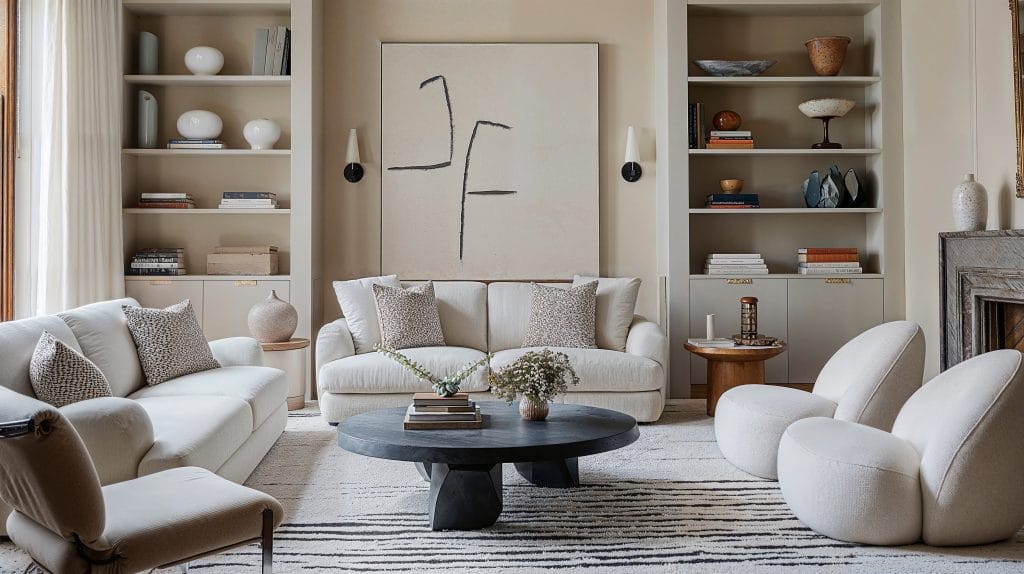Revamp your space with timeless luxury interior design.
Revamp your space with timeless luxury interior design.
Blog Article
Change Your Home With Crucial Principles of Interior Style and Aesthetic Appeals
By comprehending the effect of shade theory and the importance of structure and patterns, one can develop areas that are not only aesthetically attractive but additionally deeply personal. Achieving this balance involves even more than simple decoration; it incorporates a critical setup and a keen understanding of how each component interacts within a space.
Comprehending Shade Theory
Recognizing the concepts of color theory enables designers to create spaces that reverberate emotionally with passengers while satisfying functional needs. Each category plays a critical function in developing harmony within a space.
The psychological influence of shades is profound; warm colors such as reds and oranges evoke power and heat, while cool tones like blues and environment-friendlies promote peace and peace. Moreover, the usage of corresponding colors boosts visual interest, creating striking contrasts that can boost a space's appeal.
Neutral shades, on the other hand, work as a flexible background, permitting various other design aspects to shine. It is crucial to take into consideration aspects such as illumination and the space's function when selecting a color scheme, as these can alter the perception of shades throughout the day.
Ultimately, a well-considered color plan can transform a room, cultivating a feeling of convenience and style that aligns with the occupants' choices. Mastery of shade theory is, consequently, an essential skill for any kind of indoor developer intending to create unified and welcoming environments.
Achieving Balance in Design
Just how can developers attain a feeling of equilibrium in their areas? Achieving balance in design is essential to producing harmonious insides. Developers can make use of three primary kinds of equilibrium: in proportion, unbalanced, and radial. Symmetrical equilibrium involves organizing elements evenly around a main point, fostering a sense of order and tranquility. This type typically includes sets of furnishings or artwork, boosting aesthetic security.
Unbalanced equilibrium, on the various other hand, relies on differing components that still achieve a cohesive look. This technique enables for more dynamic and casual setups, supplying passion while maintaining equilibrium. By very carefully selecting varying dimensions, colors, and structures, designers can develop an aesthetically compelling room that really feels well balanced yet energised.
Radial balance highlights a main focal point with aspects emitting outside. This design is frequently seen in round designs, where furnishings and decoration create a natural surround that attracts the eye internal.
Ultimately, achieving equilibrium needs thoughtful consideration of range, proportion, and the connections in between elements. luxury interior design. By skillfully applying these balance principles, designers can change spaces right into settings that feel both cosmetically pleasing and functionally harmonious, boosting the total experience for residents
Significance of Spatial Recognition

A keen sense of spatial understanding allows designers to recognize focal factors within a space, guiding the viewer's focus to key functions while maintaining a total sense of unity. It likewise helps in the tactical positioning of lighting, which can significantly influence the understanding of room and mood. Moreover, understanding spatial relationships enables the developer to accommodate the specific demands of occupants, description making certain that each location serves its intended purpose without endangering aesthetics.
Inevitably, spatial recognition is important for making best use of the potential of any kind of indoor space. By carefully taking into consideration the interplay in between measurements, format, and feature, developers can develop settings that not just satisfy sensible requirements however likewise stimulate a sense of comfort and charm, improving the total living experience.
Integrating Structure and Patterns
Embracing a varied variety of textures and patterns can considerably improve the aesthetic and responsive charm of an interior room. The critical use of various products-- such as timber, metal, fabric, and stone-- develops deepness and passion, making a room feel much more inviting and vibrant. Integrating smooth surface areas with rough appearances can develop an equilibrium that draws the eye and involves the senses.
When integrating patterns, consider both scale and repeating. Large patterns can work as focal factors, while smaller, refined designs can complement various other elements without overwhelming the room. Layering patterns, such as pairing floral cushions with candy striped tosses, includes intricacy and a sense of harmony if carried out thoughtfully.
It is likewise vital to keep a natural shade scheme, making sure that structures and patterns interact instead than contend for focus. By choosing a few essential textures and patterns, you can produce a linked visual that reflects your personal style while enhancing the general ambiance of the room. Ultimately, the mindful consolidation of these components can transform a see this site mundane space into a sophisticated setting rich with personality and heat.
Individualizing Your Area
Creating a space that mirrors your personality is crucial to accomplishing a truly inviting atmosphere. Personalization in interior decoration permits you to instill your unique style and rate of interests into your home, transforming it from a simple sanctuary right into a refuge that talks to that you are. Begin by selecting a color palette that reverberates with your emotions-- strong hues can energize, while soft tones supply peace.
Integrate art work and style that mirror your enthusiasms, whether it be travel, nature, or abstract ideas. Displaying personal collections, such as books, photos, or mementos, can evoke valued memories and create focal points within a space. In addition, consider tailoring functional items, like upholstered furnishings, to align with your visual preferences.

Final Thought
To conclude, the transformation of a home with the crucial principles of indoor style and appearance necessitates a comprehensive understanding of color concept, equilibrium, spatial recognition, texture, and personalization. Each component adds substantially to creating an unified and functional living environment - miami interior design. By attentively incorporating these concepts, people can enhance the visual allure and psychological resonance of their spaces, inevitably cultivating a home that shows distinct identities while providing convenience and functionality
Report this page